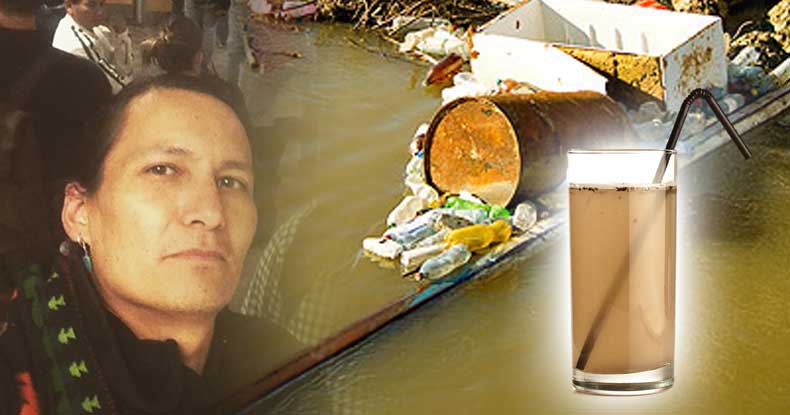
The news out of Flint, Michigan brought the issue of contaminated drinking water into sharp focus, as it was revealed that officials at every level—local, state and federal—knew about lead-poisoned water for months but did nothing to address the problem.
Under state-run systems like utilities and roads, poorer communities are the last to receive attention from government plagued by inefficiencies and corrupt politicians. Perhaps no group knows this better than Native Americans, who have been victimized by government for centuries.
In the western U.S., water contamination has been a way of life for many tribes. The advocacy group Clean Up The Mines! describes the situation in Navajo country, which is far worse than in Flint, Michigan.
Since the 1950s, their water has been poisoned by uranium mining to fuel the nuclear industry and the making of atomic bombs for the U.S. military. Coal mining and coal-fired power plants have added to the mix. The latest assault on Navajo water was carried out by the massive toxic spills into the Animas and San Juan rivers when the EPA recklessly attempted to address the abandoned Gold King mine.
“In 2015 the Gold King Mine spill was a wake-up call to address dangers of abandoned mines, but there are currently more than 15,000 toxic uranium mines that remain abandoned throughout the US,” said Charmaine White Face from the South Dakota based organization Defenders of the Black Hills. “For more than 50 years, many of these hazardous sites have been contaminating the land, air, water, and national monuments such as Mt. Rushmore and the Grand Canyon. Each one of these thousands of abandoned uranium mines is a potential Gold King mine disaster with the greater added threat of radioactive pollution. For the sake of our health, air, land, and water, we can’t let that happen.”
There is no comprehensive law requiring cleanup of abandoned uranium mines, meaning corporations and government can walk away from them after exploiting their resources. 75 percent of abandoned uranium mines are on federal and Tribal lands.
Leona Morgan of Diné No Nukes points out one example: “The United Nuclear Corporation mill tailings spill of 1979, north of Churchrock, New Mexico left an immense amount of radioactive contamination that down-streamers, today, are currently receiving in their drinking water. A mostly-Navajo community in Sanders, Arizona has been exposed to twice the legal limit allowable for uranium through their tap.”
Last week, Diné No Nukes participated in protests in Washington, D.C. to raise awareness of past and ongoing contamination of water supplies in the west, which disproportionately affects Indian country.
“The delegation is warning of the toxic legacy caused by more than 15,000 AUMs nationwide, extreme water contamination, surface strip coal mining and power plants burning coal-laced with radioactive particles, radioactive waste from oil well drilling in the Bakken Oil Range, mill tailings, waste storage, and renewed mining threats to sacred places such as Mt. Taylor in New Mexico and Red Butte in Arizona.”
“These uranium mines cause radioactive contamination, and as a result all the residents in their vicinity are becoming nuclear radiation victims,” said Petuuche Gilbert of the Laguna Acoma Coalition for a Safe Environment, the Multicultural Alliance for a Safe Environment and Indigenous World Association. “New Mexico and the federal government have provided little funding for widespread clean up and only occasionally are old mines remediated. The governments of New Mexico and the United States have a duty to clean up these radioactive mines and mills and, furthermore, to perform health studies to determine the effects of radioactive poisoning. The MASE and LACSE organizations oppose new uranium mining and demand legacy uranium mines to be cleaned up,” said Mr. Gilbert.
Politicians continue to take advantage of Native Americans, making deals with mining companies that would continue polluting their water supplies. Senator John McCain sneaked a resolution into the last defense bill which gave land to Resolution Copper. Their planned copper mining would poison waters that Apaches rely on and would desecrate the ceremonial grounds at Oak Flat.
While EPA and local officials have been forced to address the poisoned water in Flint, the contamination of Indian country water supplies continues. A bill called the Uranium Exploration and Mining Accountability Act, introduced by Arizona Congressman Raúl Grijalva, has languished in Congress for two years.
source:
From Around the Web
Related posts:
Views: 0
 RSS Feed
RSS Feed

















 December 1st, 2020
December 1st, 2020  Awake Goy
Awake Goy  Posted in
Posted in  Tags:
Tags: 
















